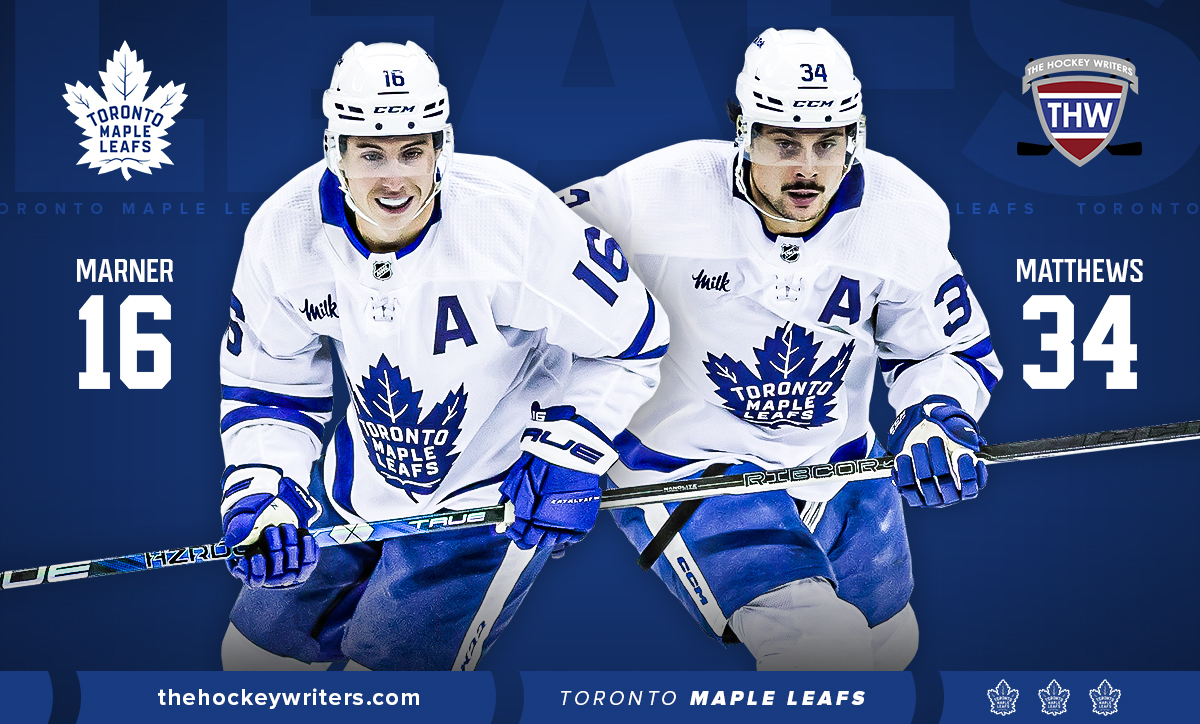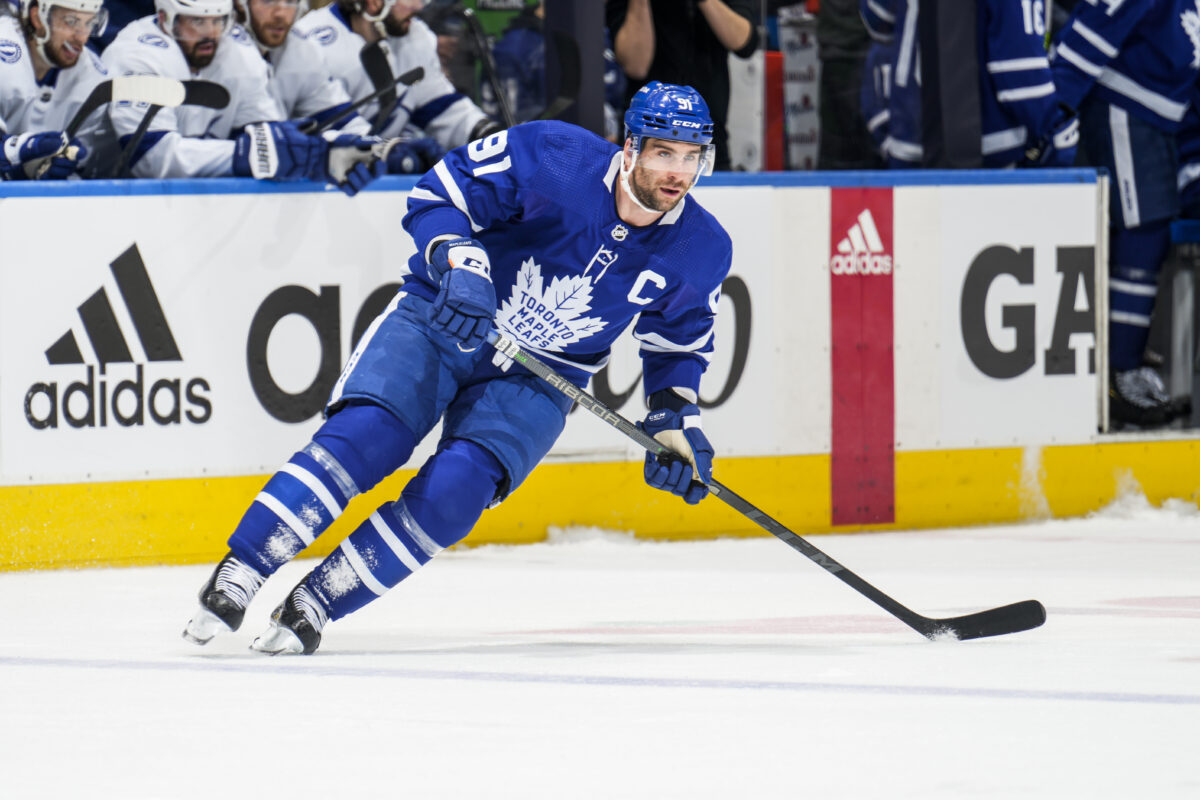With the Toronto Maple Leafs gearing up for training camp next week, it’s the perfect time to dive into our thoughts on the team’s ultimate lineup. In this comprehensive review, I’ll be teaming up with my regular writing partner, Stan Smith, to analyze the Maple Leafs’ roster from top to bottom.
We’ll break down our evaluation into three detailed sections:
- Top Six Forwards: First, we’ll examine the team’s top six forwards, exploring the key players and potential line combinations that could drive the offense.
- Bottom Six Forwards: In our follow-up post, we’ll examine the bottom six forwards, assessing their roles and the impact they could have on the team’s overall performance.
- Defense: Finally, we’ll provide an in-depth review of the Maple Leafs’ defensive corps, evaluating their strengths, potential pairings, and overall contributions to the team’s success.
This is our first post as we attempt to uncover what this Maple Leafs team might look like as the regular season begins.
The First Line: Matthew Knies – Auston Matthews – Mitch Marner
Auston Matthews is one of the top three players in the NHL and the best goal scorer. Now, he is also the captain of the Maple Leafs. This is officially his team. He is the undisputed first-line center. ‘Nuff said.
Related: Maple Leafs’ Point Projections for the 2024-25 NHL Season
Matthews with Mitch Marner. Matthews without Mitch Marner. That has been a question for eight years and will continue to be a question. There is also the argument about the better right winger, Marner or William Nylander. For most of their careers, the general opinion has been that Marner has been the superior player. Nylander has closed that gap, and an argument could be made that he surpassed Marner last season. A case could be made for Nylander to be on Matthews’ right wing.
The reason we went with Marner is because of his playmaking skills. Marner is the superior playmaker. He has 445 assists in his career compared to Nylander’s 311 in 27 fewer games played. With Matthews being the best goal-scorer in the league, it makes sense to put him next to the superior playmaker. As a bonus, both Matthews and Marner are complete 200-foot players. Both have solid defensive games and are in the Selke discussion at the end of each season. One last point: Nylander is a 40-goal scorer with a far superior shot than Marner. To us, he is more valuable playing away from Matthews.

Matthew Knies is a young and emerging power forward. While he might not have put up the numbers you would hope to see from a top-line winger last season, his game complements that of Matthews and Marner quite well. Knies is the physical straw that stirs the drink on that line. He had 20 more hits (169) than Matthews (90) and Marner (59) combined last season. One of the set plays Matthews and Marner have had together right from day one was to dump the puck into the left corner of the opposition’s zone and let the left winger go in, bang bodies, and retrieve the puck. First, it was Zach Hyman, then Michael Bunting, and now Knies. With last year being Knies’ rookie season, we don’t expect any sophomore jinx this season. We believe he will take the next step in becoming a proto-typical power forward.
The Second Line: Easton Cowan – John Tavares – William Nylander
We realize John Tavares will be 34 years old when the puck drops in the 2024-25 season. While people claim he has lost a step, we have not seen it. According to the new NHL Edge stats, Tavares’ top speed last season was 22.39 MPH (36.03 KM/H) compared to the league average of 22.10 MPH (35.57 KM/H). On 105 occasions during games, he reached speeds over 20 MPH (32.19 KM/H). The league average was 73 occasions. Those stats weren’t available when Tavares was in his prime, so we can’t compare his skating now to when he was in his prime. He is above average when it comes to his skating. Speed might not be a strength, but it is not a weakness either.
Related: Jake McCabe’s Return Is Crucial to the Maple Leafs Defense
The bigger question with Tavares is his stamina. Can he play 20 minutes a game? Does he have to? As the second-line center, Tavares has averaged just under 18 minutes a game over the past four seasons. That does not seem like a huge load. He does not kill penalties, and his role on the power play is usually down low, either in front of the net or close to it. That does not require a ton of skating. We don’t see why he should have to change his role too much due to his age. Our biggest worry might be his defensive coverage and how fast he can recover if the play turns back up ice. There are hybrid defensive systems that could account for that if Tavares has faster wingers on his line.
Since joining the team, Tavares has been the Maple Leafs’ best center on the faceoff dot. Last season, his faceoff winning percentage was 59.3%. While his point production dropped by 20% last season, he still scored 29 goals and 65 points. He had averaged a point a game until last season and had a 36-goal, 80-point season in 2022-23. We can’t know if the dropoff was due to a decline in ability or a one-off. At this point, Tavares is still the Maple Leafs’ second-best center.

With Marner on the top line, it is a no-brainer that Nylander lines up with Tavares on the second line. Nylander’s all-around game has improved steadily over the past few years. He has scored 40 goals in each of the last two seasons. His point production for the last three seasons has been 80, 87, and 98. He is a strong puck carrier and has a dangerous, deceptive shot. While Tavares and Nylander have not put up the most outstanding defensive underlying stats together, Nylander’s game without the puck is slowly improving.
Related: NHL Rumors: Maple Leafs, Oilers, Stars, Jets
It might surprise some that we have Easton Cowan on this line as part of the ultimate lineup. While his play in juniors has well surpassed what you might expect from someone who was a surprise late first-round pick in the 2023 NHL Draft, how his game translates to the NHL is still in question. Our reasoning is simple. Having Cowan on this line means he earned a spot out of camp, giving the Maple Leafs more options further down the lineup. Cowan makes the team and will be in the fight for the Calder Trophy. We don’t expect him to win Rookie of the Year, but he will be in the conversation.
We need to cover ourselves by stating that if Cowan doesn’t make the team out of camp, the battle for the left-wing spot on the second line will be between Max Domi, Bobby McMann, and Nick Robertson.
The Maple Leafs Top Six in a Nutshell
In summary, the top six forwards have two key aspects that make this unit particularly exciting. First, the core four players are well-distributed across the two lines: two on the first line and two on the second. Their young, cost-effective partners give the team greater flexibility and balance, enhancing the lineup’s overall strength. We’re confident that players like Knies will seamlessly integrate into this setup, contributing to a formidable top six.
Second, Cowan’s potential impact as a tipping point in this unit is significant. His relentless drive and desire to succeed, coupled with his proven scoring ability from last season in juniors, make him a player to watch. Although his spot on the roster ultimately depends on the coaching staff’s decisions, his potential is undeniable.
As we anticipate an exciting top six for the Maple Leafs, in our next post, we’ll analyze the bottom six forwards and how they’ll complement this dynamic lineup.
[Note: I want to thank long-time Maple Leafs fan Stan Smith for collaborating with me on this post. Stan’s Facebook profile can be found here.]
